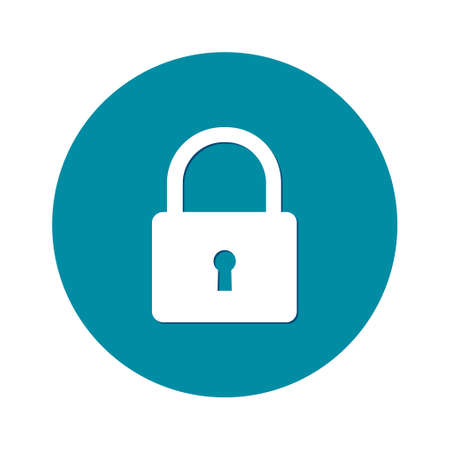
- By abrar arshad 31-Mar-2023
- 926
Order Management Software is a digital tool designed to help businesses streamline their sales and order fulfillment processes. This software allows businesses to manage their inventory, track customer orders, and automate many of the tasks involved in order fulfillment. Order Management Software typically includes features such as real-time inventory tracking, automated order processing, and reporting and analytics tools to help businesses make data-driven decisions. It can also integrate with other software systems such as accounting software or e-commerce platforms. The software simplifies the process of managing orders, reducing errors and increasing efficiency. It helps businesses improve their customer service by providing real-time updates on order status and improving order fulfillment times. Ultimately, Order Management Software helps businesses save time and resources, enabling them to focus on growth and customer satisfaction.
Order management is a critical function for businesses that sell products or services. It involves receiving, processing, fulfilling, and tracking customer orders. As businesses grow, managing orders manually can become overwhelming and time-consuming. That's where order management software comes in.
Order management software automates the entire order management process, enabling businesses to handle orders efficiently and accurately. In this article, we'll discuss the key factors to consider when choosing an order management software.
1.Business needs:
The first step in selecting an order management software is to assess your business needs. Identify the pain points in your current order management process and the features you require in the software. For instance, if you sell across multiple channels, you need software that can integrate with all those channels seamlessly.
2.Order processing:
The software should provide a streamlined order processing system that allows you to receive, view, edit, and manage orders in real-time. It should also allow you to customize order statuses, set automated order fulfillment, and track order history.
3.Inventory management:
A good order management software should integrate with your inventory management system to ensure that your stock levels are up-to-date. It should also provide real-time inventory tracking and automated inventory alerts to help you avoid stockouts.
4.Shipping and fulfillment:
The software should have built-in shipping and fulfillment integrations to make the process of shipping and tracking orders easy. It should also enable you to manage shipping rates, print shipping labels, and send tracking information to customers automatically.
5.Reporting and analytics:
The software should provide detailed reporting and analytics features to give you insights into your order management process. You should be able to generate reports on sales, inventory, order fulfillment, and customer data.
6.Integration with other systems:
Your order management software should integrate with other business systems, such as accounting, CRM, and marketing automation software. This ensures that all your business processes are streamlined and connected.
7.User-friendly interface:
The software should have a user-friendly interface that is easy to navigate and use. It should also offer training and support to help you and your team get up to speed quickly.
8.Pricing:
Finally, consider the pricing model of the software. Look for a software provider that offers a pricing plan that suits your budget and provides good value for money.
In conclusion, an order management software can help businesses streamline their order management processes, reduce errors, and improve efficiency. When selecting an order management software, consider your business needs, order processing, inventory management, shipping and fulfillment, reporting and analytics, integration with other systems, user-friendly interface, and pricing. By choosing the right software, you can transform your order management process and take your business to the next level.
9.Scalability:
As your business grows, so will your order volume. Therefore, it's important to choose a software that can handle the increased workload without any issues. The software should be able to handle a large number of orders and users, as well as integrate with new systems or platforms as needed.
10.Security:
Your order management software will be handling sensitive customer and business data, so it's crucial to choose a software that has robust security features. Look for software that includes features like data encryption, secure payment processing, and user access controls.
11.Customization:
Every business has unique needs and workflows, so the software should be customizable to fit your specific requirements. Look for software that allows you to add custom fields, automate workflows, and tailor the user interface to your preferences.
12.Mobile compatibility:
In today's business environment, it's important to have access to your order management system on-the-go. Look for software that has a mobile app or is compatible with mobile devices, so you can manage your orders from anywhere.
13.Customer service:
It's important to choose a software provider that offers reliable customer service and support. Look for providers that offer multiple channels for support, such as email, phone, and chat, and have a good reputation for responding promptly to customer inquiries.
14.Ease of implementation:
Implementing new software can be a daunting task, so look for software that has an easy implementation process. Choose software that provides comprehensive documentation, training, and support to ensure a smooth transition to the new system.
15.User permissions:
Depending on the size of your business and the number of users who will be accessing the software, you may need to set different levels of user permissions. Look for software that allows you to create custom user roles and permissions to ensure that users can only access the features they need.
In summary, choosing the right order management software can make a big difference in your business's efficiency, productivity, and customer satisfaction. When evaluating software options, consider factors like scalability, security, customization, mobile compatibility, customer service, ease of implementation, and user permissions. By carefully weighing these factors, you can select software that fits your business's needs and helps you streamline your order management process.
16.Integration with payment gateways:
Your order management software should integrate with various payment gateways to facilitate the payment process for your customers. This enables customers to pay using their preferred payment method, and the payment is automatically reconciled with the order.
17.Multilingual support:
If your business operates in multiple countries or has customers who speak different languages, you need a software that supports multiple languages. This ensures that your customers can place orders in their preferred language, and the software can handle multilingual order management.
18.Returns and exchanges management:
Sometimes customers may want to return or exchange a product. Therefore, the software should provide a streamlined process for managing returns and exchanges, including processing refunds, updating inventory, and tracking the status of the return or exchange.
19.Order tracking and notifications:
The software should provide real-time tracking of orders and send automatic notifications to customers at various stages of the order process. This includes order confirmation, shipping confirmation, and delivery confirmation.
20.Automated workflows:
The software should provide automated workflows for repetitive tasks, such as order fulfillment, inventory management, and shipping. This not only saves time but also reduces the likelihood of errors.
21.Performance metrics:
To evaluate the effectiveness of your order management process, the software should provide performance metrics such as order volume, average order value, order lead time, and customer satisfaction.
22.Data analysis:
The software should have data analysis capabilities that allow you to identify trends, track performance, and make informed decisions based on your data. This includes data visualization tools, data mining, and predictive analytics.
23.Customer management:
The software should provide customer management features that enable you to view customer information, order history, and communication history. This allows you to provide personalized customer service and marketing.
24.Compliance:
Depending on your industry and location, there may be specific regulations and compliance requirements that your order management software must adhere to. Look for software that meets relevant regulatory standards and has built-in compliance features.
25.Cloud-based vs. on-premise:
You can choose between a cloud-based order management software or an on-premise software. Cloud-based software allows you to access the software from anywhere with an internet connection, while on-premise software is installed locally on your company's servers. Consider your business's needs, budget, and IT infrastructure when deciding which option is best.
In conclusion, choosing the right order management software is crucial for businesses looking to streamline their order management process, reduce errors, and improve efficiency. Consider factors like integration with payment gateways, multilingual support, returns and exchanges management, order tracking and notifications, automated workflows, performance metrics, data analysis, customer management, compliance, and cloud-based vs. on-premise. By carefully evaluating these factors, you can choose software that meets your business's specific needs and enables you to take your order management process to the next level.


.png)







